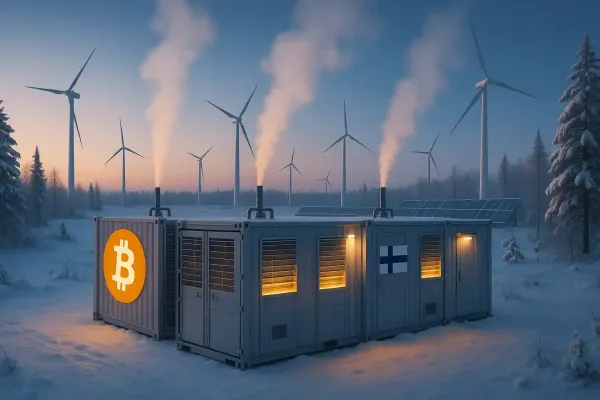Small-Scale Bitcoin Miners Amid Geopolitics: Survive or Be Squeezed Out in the High-Price Era?

Background
In July 2025, Bitcoin’s price surged to the $117,000–$121.487 range, driven by institutional adoption—including $4.5 billion in Bitcoin ETF inflows—and supply constraints due to widespread HODLing. However, small-scale miners—individuals or small operations using ASIC rigs or joining mining pools—face immense challenges from rising mining difficulty, energy costs, and shifting geopolitics.
From mining bans in certain countries to U.S.–China trade tariffs, this article explores how small miners are struggling to survive amid global dynamics—and what it means for Bitcoin’s future.
Introduction: Small Miners in the Era of High Bitcoin Prices
Bitcoin has risen to over $117,000 per coin, with miners producing 450 new BTC daily (144 blocks × 3.125 BTC after the 2024 halving).
Once the backbone of Bitcoin’s decentralization, small-scale miners are now squeezed by high operational costs and the dominance of large firms like Marathon Digital and Core Scientific.
Key question: How can small miners survive under growing geopolitical pressure and intense industry competition?
Challenges for Small Miners in 2025
Soaring Operational Costs
The cost to mine 1 BTC reached $33,900 (as of January 2025), while mining difficulty hit 126.4 trillion (June 2025), requiring advanced ASICs that can cost up to $10,000 per unit—a barrier for small miners.
Competition from Industrial Miners
Large firms like Marathon (with 58 EH/s hash rate) benefit from economies of scale and access to cheap energy. Small miners are often forced into mining pools, which dilute individual profits.
Impact of the 2024 Halving
With block rewards reduced to 3.125 BTC, many small miners must sell more of their mined BTC to cover expenses—especially those lacking liquidity reserves.
Rising Energy Costs
Global energy prices, influenced by geopolitical tensions (e.g., the Iran–Israel conflict), have driven up electricity costs—the largest expenditure for small miners.
Geopolitical Impacts on Small Miners
Bans and Regulatory Constraints
- Russia is planning to ban data centers from using subsidized electricity for crypto mining, affecting small miners who rely on cheap energy. While 90% of industrial Russian miners focus on BTC, small miners often pivot to Ethereum for survival.
- China, despite banning domestic mining in 2021, still controls 55–65% of global mining via firms like Bitmain, which manufactures 99% of the world’s ASIC rigs. Small miners outside China struggle with hardware access, worsened by U.S. tariffs on Chinese goods.
- Iran, accounting for 3.1% of global hash rate, highlights how cheap-energy countries attract small miners. However, sanctions and instability pose significant risks.
U.S. Tariffs and the Trade War
- Trump-era tariffs on Chinese mining hardware forced Bitmain, Canaan, and MicroBT to relocate production to the U.S., increasing ASIC costs and making it harder for small miners to upgrade equipment.
- The U.S. promotes domestic mining through pro-Bitcoin policies like the Strategic Bitcoin Reserve, but these initiatives largely benefit large-scale miners like MARA Holdings, not small operators.
Geopolitical Tensions and Market Volatility
Events like the Iran–Israel conflict triggered a 7.33% BTC price drop in June 2025, forcing small miners to sell at a loss—raising the risk of financial wipeouts.
Adaptation Strategies for Small Miners
Joining Mining Pools
Small miners partner with pools like AntPool or F2Pool to share hash rate and rewards, though this reduces individual profit margins.
Utilizing Renewable Energy
Some small miners in regions like Africa (e.g., Kenya via Gridless) and Bhutan are switching to hydropower or solar, following the lead of firms like Iris Energy (100% renewable mining).
Diversifying Revenue Streams
Inspired by large firms like Hut 8 and Core Scientific, some small miners rent out ASIC rigs for AI computing or mine altcoins (e.g., Ethereum) to supplement income.
Relocating to Crypto-Friendly Regions
Small miners are moving to countries with cheap electricity and loose regulations, such as Kazakhstan or Paraguay, though political instability remains a risk.
Impacts on the Bitcoin Ecosystem and Market
Decentralization Under Threat
As large miners dominate, the role of small miners—historically vital for Bitcoin’s decentralization—shrinks. This centralization of hash rate raises long-term concerns.
Supply and Pricing Impacts
Small miners usually sell 50–80% of their share of the 450 daily BTC (225–360 BTC), but this has limited impact due to Bitcoin’s multi-billion dollar daily trading volume. Still, mass capitulation during downturns can amplify volatility.
Geopolitics and Hardware Supply
Dependence on China-made ASICs and U.S. tariffs raises costs and accelerates industry consolidation around major mining firms.
The Future of Small Miners
Sustainability Challenges
With 93% of the 21 million BTC supply already mined, competition for the remaining coins is fierce. Without innovation or relocation to low-cost regions, small miners may be pushed out entirely.
Opportunities in Niche Markets
Small miners can survive by focusing on green energy or altcoin mining in crypto-friendly regions. Platforms like AAS Miner, which offer AI-based cloud mining, present new low-barrier opportunities.
Long-Term Geopolitical Shifts
Pro-Bitcoin policies (e.g., Strategic Bitcoin Reserve in the U.S.) or outright bans (e.g., in Russia or China) will continue shaping the mining landscape—potentially pushing small miners toward Latin America or Africa.
Conclusion & Call to Action
Small-scale miners face tremendous pressure from rising costs, regulation, and geopolitical instability. Yet, innovation through renewables and cloud mining offers hope for survival.
For investors and crypto enthusiasts, understanding the struggles of small miners is essential to predict Bitcoin’s supply dynamics and price behavior.
Call to Action:
Track metrics like hash rate, mining difficulty, and geopolitical policies using platforms like Glassnode or CoinGecko.
And as always: Do Your Own Research (DYOR) before diving into mining or crypto investments in today’s volatile environment.
This article presented by Loka Mining.
Loka is revolutionizing the Bitcoin mining ecosystem by directly connecting investors with Bitcoin miners through a decentralized mining pool and an upcoming permissionless forward hashrate marketplace protocol.
Loka enables investors to get Bitcoin at lower than market price without centralized & counter-party risks, and Bitcoin miners to access capital efficient financing and hedge their risk exposure by selling their future mining rewards.
Find out more about loka in https://lokamining.com — or access our mining pool aggregator on https://pool.lokamining.com





